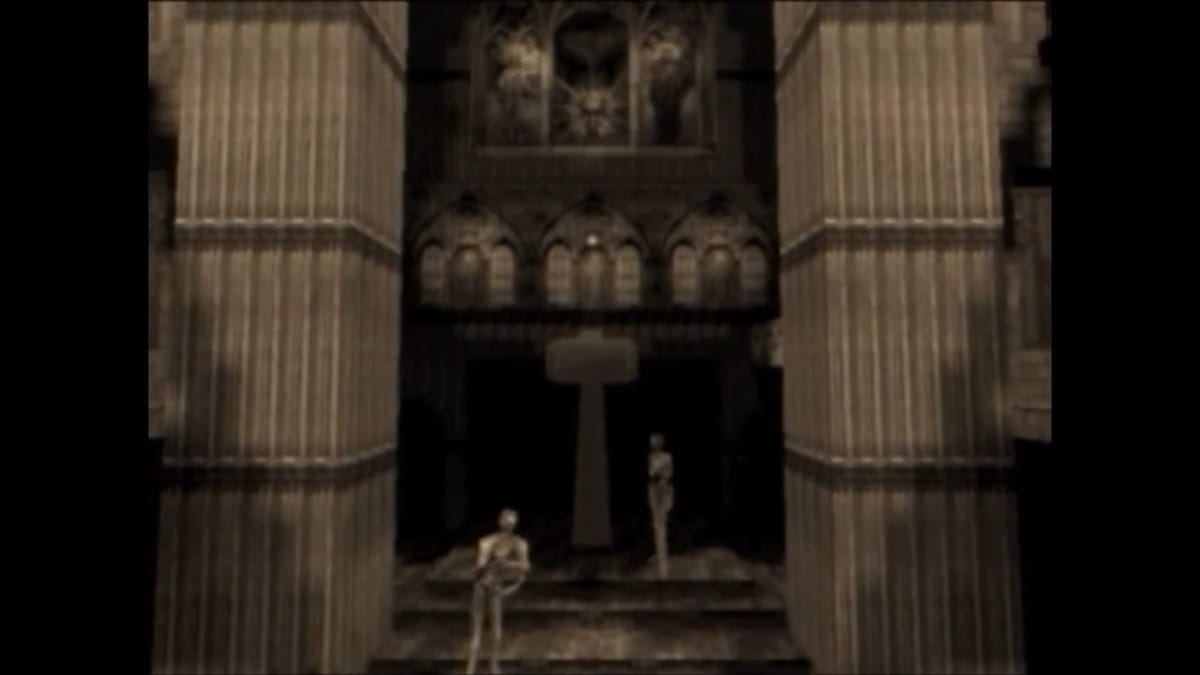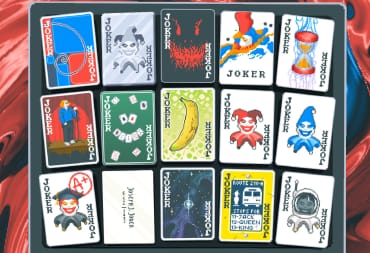Horror is an odd kind of entertainment as it takes us away to a place we do not want to be. The indulgence in these unusual experiences is especially popular this time of year. Video games allow for the best horror experiences in entertainment, as no other medium can match games’ ability to draw and hold the player in a world of dread, horror, and suspense.
Classics like Resident Evil and Silent Hill, and more current masterpieces like Amnesia: The Dark Descent, demonstrate that interactivity. Playing as the character exploring a world, rather than watching a character take action, is a powerful ingredient.
Though not a horror game series, Thief has supernatural themes throughout and a few strong horror-themed missions. From the ruins of a haunted cathedral to the possessed interiors of a cursed asylum to a mortuary, to a town ravaged by unknown assailants, Thief again and again proves that it can cook up game spaces you don’t want to explore. The dread can be palpable.
As a disclosure, I have always been an enthusiast of atmospheric, implied, and subtle horror, so I'm biased here. I do not doubt the power that more graphic and explicit horror has - it is for this very reason that I avoid consuming it. However, mine is the horror of an investigator exploring a haunted house, a local legend about a monster you rarely see, and other such setups. It is this kind of horror that Thief excels at. Indeed, the series has some of the greatest haunted houses that can be tread.
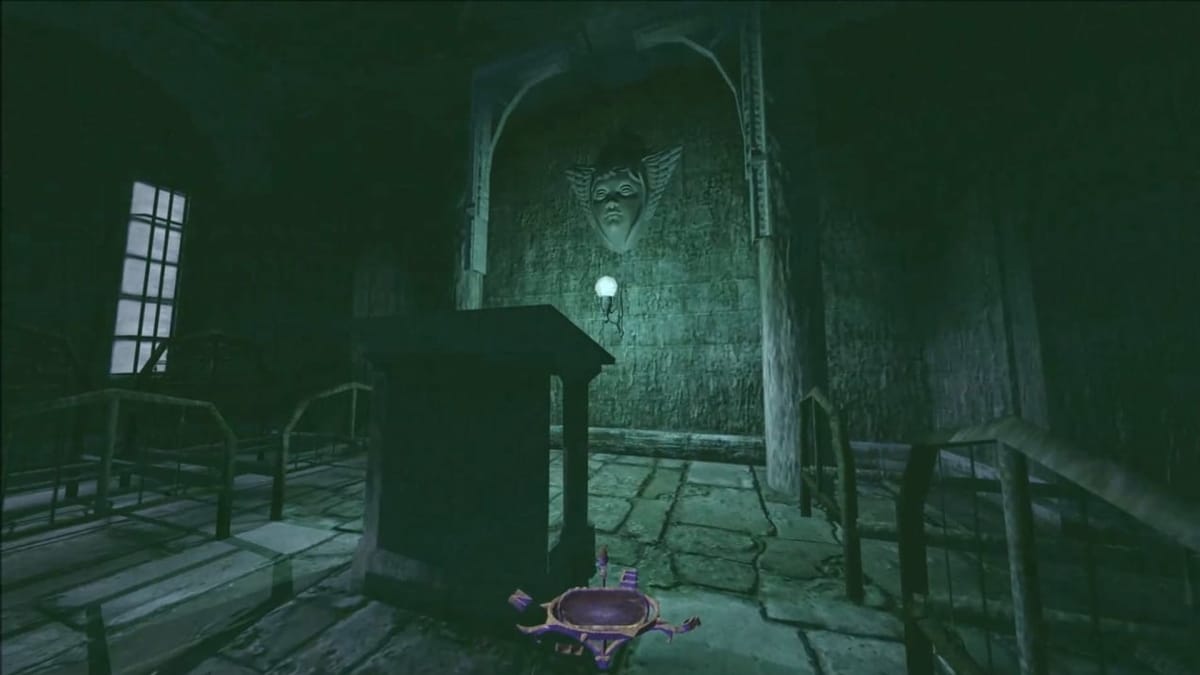
The first key to Thief’s horror success? Stealth. From a foundation of stealth, game designers can make a more dreadful world for players. Hiding from monsters that can quickly kill you is much more terrifying than slaying monsters easily with a shotgun. Inching your way through a building as you check to make sure each corridor is clear of creatures hunting you inspires much more terror than sprinting down hallways as monsters leap out at you. The player needs to feel weak and find themselves lost or trapped in an intimidating atmosphere in order for a sense of horror to be more convincingly created. This is the kind of environment stealth gameplay can create.
Take, for example, the original Thief’s Return to the Cathedral mission. Here, player-character Garrett finds himself in an abandoned building—a cathedral of the game’s Hammerite faction, located deep within an abandoned, walled-off sector. A plaque above the cathedral door reads “Warning: Great evil resides in this place, and it is no longer fit for men. The doors are sealed, to protect us from that which lies within. Do not remain here.” Quite a foreboding text to read! Then, a whispery voice greets the player as soon as they enter the cathedral, and a readable right next to the door details the final moments of the disaster that ruined the place. After completing the mission’s first objective, the player returns to the entry doors to find them shut and locked - never a good sign.
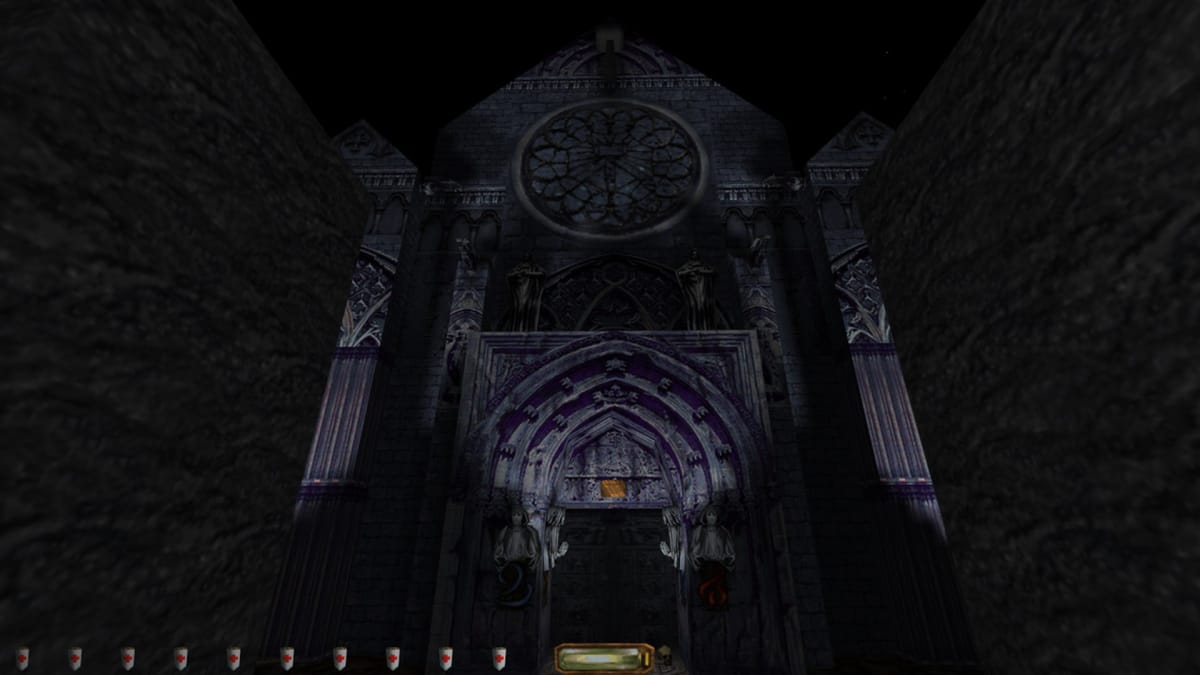
The cathedral also houses one of the series’ most formidable and terrifying opponents: Hammer Haunts. These ghouls were Hammerites in life, but are now twisted undead and ready to take the player down as soon as they spot them. Whispering as they stand vigil and laughing maniacally if they spot the player, they’re enemies you do not want to be caught by. Through these environmental designs, the mission creates suspense and dread, and the stealth basis of Thief allows the environment of the cathedral to be even more forbidding. Crouched in shadows, the place’s sense of unease comes alive; the feeling that you do not belong there is amplified by the need to stay hidden from powerful enemies.
Thief also creates exceptional horror with its audio cues. Hearing noises from off in the distance is a classic horror trope. Disturbed or scary voices, cries, and laughter are vital to terrifying experiences. The audio ambiance in Thief is particularly well suited to all this. Abandoned or empty buildings, ancient ruins, and any like edifice are perfect subjects for the game’s audio design principles. Audio loops of moody beats, white noise, and familiar and strange sounds accompany the game world. Cozy studies, dimly-lit churches, vast atriums, and several other types of environments feel more alive thanks to the series’ audio blends. In Thief: Deadly Shadows’ Shalebridge Cradle level, a demonic and unsettling mix plays in the background.
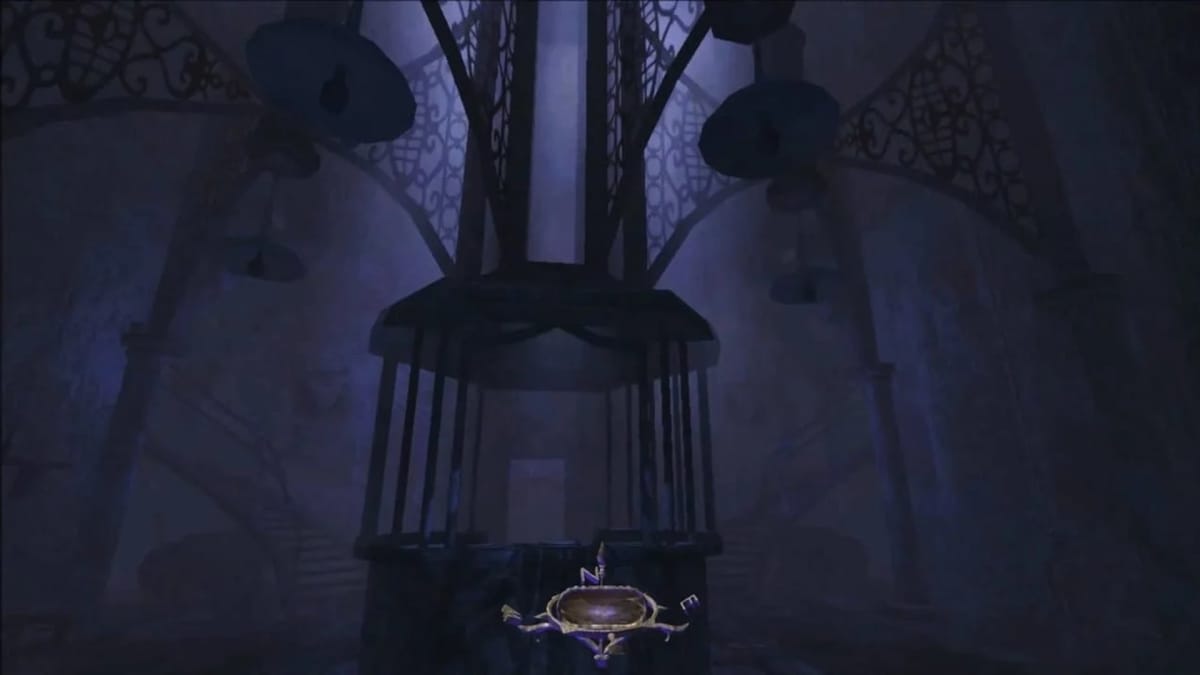
The Cradle was both an orphanage and an insane asylum. As you learn more about it, you understand it is haunted by a tortured past, making the audio all the more effective. It consists of vague voices, mad screams, children’s voices and laughter, crying, and various warped instrumental noises. The level is divided into two sections, one primarily for the orphans and one for the asylum inmates (there is some mixture between the two). Within each part a different ambient track plays. There is also a moment early in the level by which the Cradle becomes aware of your, Garrett’s, presence.
At this point, extra voices are added into the audio. These are children’s voices that sound like they could be marveling at this new visitor and wondering who he is, asking him specifically for help. The variety of agonized voices and environmental sounds mixed together makes exploring the Cradle an almost unbearable experience. It is a merciless audio mix that requires courage in every inch forward you take.
Sneaky gameplay and masterful audio set Thief’s horror apart, but something must be said for a facet less specific to Thief. The first-person perspective, I argue, enhances the sense of terror felt in horror games. This is not a knock against third-person horror. Indeed, I noted and celebrated Resident Evil as a horror classic. There are reasons to argue for the third-person’s effectiveness over the first-person’s, but I take the latter.
The series’ first-person perspective is key to its horrifying moments because of how it places you in the game world. I argue that by seeing directly into the world, one feels more vulnerable, such as to creatures lumbering nearby. For this reason, I loved Resident Evil 7. Amnesia: The Dark Descent was made in this vein - another of my favorites. What the first-person perspective accomplishes is the removal of a boundary from the player’s connection to the game world. When there is a visible body that the player is controlling, it removes them more so from a feeling of threat. A creature, for example, is running at the character I see on the screen; not at me.
While the first-person perspective does not wholly convey the latter - one can argue that any creature is still running at the game character on screen - the camera just happens to be placed behind the character’s eyes; I think it remains the case that this juxtaposition of the camera enhances the illusion. Players can still feel a thrill of terror as the giant eel pursues them in Super Mario 64, but imagine how greater this thrill would be if one saw such a monstrosity coming at them in the first person.
That is, in Thief, when Hammer haunts chase you, it’s terrifying as you hear them laughing right behind you, and if you turn around, they’re right there. When you move about the environment and see haunts, zombies, spiders, and other creatures, you feel you are sharing this space with them, and feel much more vulnerable. The most terrifying of these experiences is in A Better Tomorrow. Your personal conviction in the power of the first-person perspective will be hardened to near invulnerability when one of this mission’s creatures chases you down.
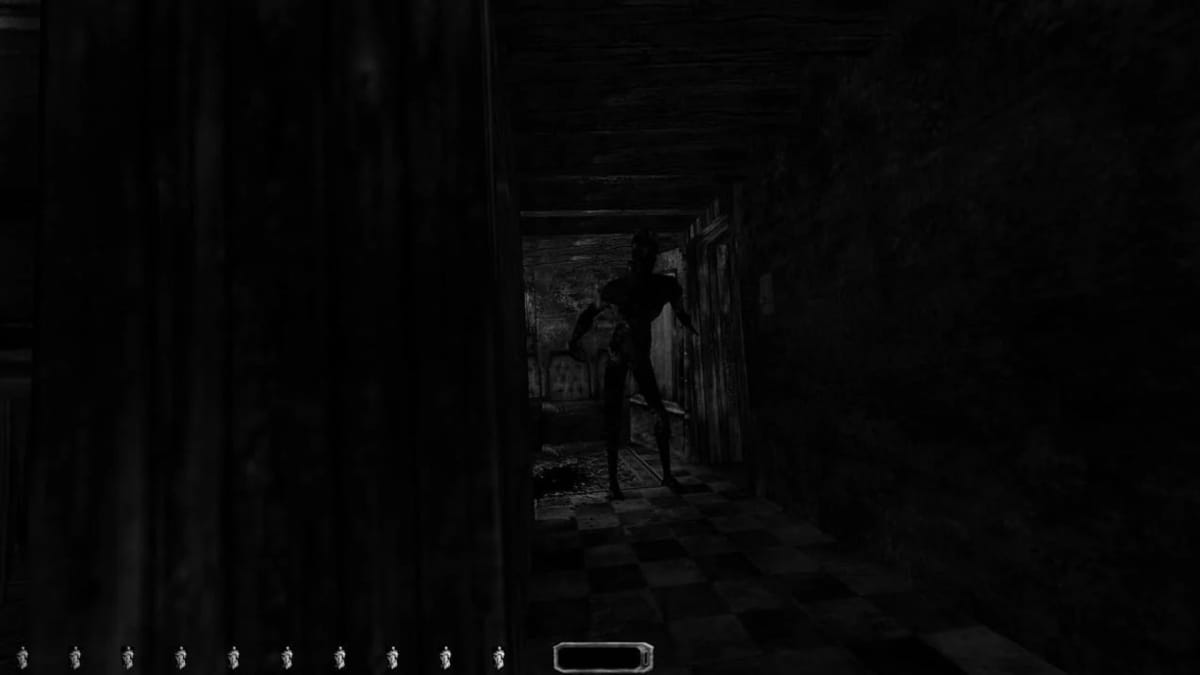
Finally, Thief’s method of relaying narrative complements its style of horror. Suspense is created when, in areas like the haunted cathedral or Shalebridge, you read of past events in diary entries. You also learn the story behind a place by seeing its ruins. In the haunted cathedral, for example, several buildings in the cloister are named after Hammerite saints and contain several functions – like blacksmithing or research and study – all suggesting the activity that once took place on these now cursed grounds. The besieged town ruin in A Better Tomorrow is filled with suggestions of a brutal, unexpected attack and the subsequent flight.
Houses and shops have doors and windows barricaded with hastily moved furniture. Blood stains and flickering lights indicate the locations of attacks, and the lack of any dead bodies, corroborated by journal entries detailing such, show that the attacking monsters take the bodies. When one of the brutes stampedes you, you understand why there was such hasty abandon in the town. Thief is masterful at using the environment to tell players what has taken place, be it long ago – as in the case of the haunted cathedral – or just recently, as in the case of the ruins in Better Tomorrow.
With Halloween upon us, you may be partaking of a tradition of scaring yourself silly. While perusing horror movies and paying visits to jump-scare and gross-out-laden haunted house exhibits, take a moment to relish the Thief way of doing horror. Turn out the lights, put on some headphones, and sink into one of the missions I noted here, or find another. Enjoy a delectable first-person immersive treat that will give you a richer sense of dread than a series of jump scares (though there may be some of those in these, too).
This post was originally published in 2018 as a part of our Dark Narrative series. It's been republished to have better formatting.
Have a tip, or want to point out something we missed? Leave a Comment or e-mail us at tips@techraptor.net
